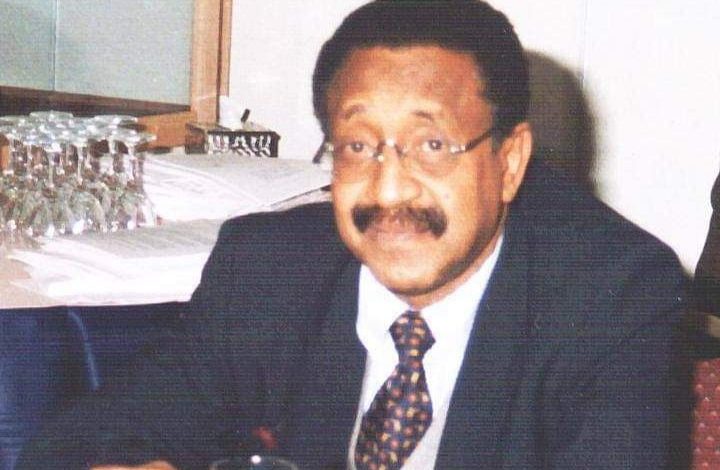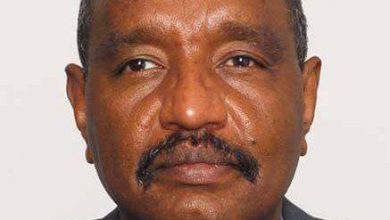Post-war Sudan: Vision’s Highlights (1-2)

Al-Wathiq Kameir
kameir@yahoo.com
Toronto, December 9, 2023
One Army: The First Pillar of the Vision
I have posted an audio recording last October 23 (available on Al-Balad News Channel and the Sudanese Facebook platform), in which I answered an important question asked by many people on: How to stop the war and what is the fate of the Rapid Support Militia (RSF). In this article I will try to answer the question: What are the features of the vision for Sudan when this war come to an end?? The answer to the question about the vision could be separated or understood in isolation from how to stop the war and what is the future of RSF. As to my vision for post-war Sudan, which many people share with me, I asked for permission to talk about its features, has two pillars, the first of which is: No one wants this war to continue, to the exception of the brokers and warmongers , and yes to negotiating security arrangements that do not reproduce a militia parallel to the army, and end the war by addressing and resolving its root-causes, resolving issue of the formation of a single national army, a unified command, and the formation of a professional army that tolerate no presence of political organizations within it, and be subject to reform and development, together with the rest of the other security sectors, and accommodate the diversity and multiplicity with which the entire country abounds. This does not mean in any way standing against the choice of militia leaders, who are not subject to criminal charges or human rights violations, to practice political activities in accordance with the Laws regulating the work of upcoming Political Parties and Organizations.
The second pillar of the vision is based on the need for reviewing the approach of political and civil forces in dealing with the periods following the revolutions (1954, 1985, 2018) and changing the goal from “the transfer of power” to the goal of “establishing the state.”
In fact, wars remained the distinctive feature of the political history of post-independence Sudan, and they were not curbed until the secession of the south in 2011. The main motives and fundamental causes of these wars go to the structural imbalance in the post-independence state, which failed to address the founding questions, constitutional principles, and foundations for building a state of Sudanese citizenship. The failure to agree on these issues led to the outbreak of the first armed resistance in the south of the country before the declaration of independence in 1956, and to the extension and expansion of the war, geographically, to cover western, southwestern, eastern and southeastern Sudan. These foundational issues are evident in: the form and system of government (particularly the relationship between the center and the regions (embodied by true federalism), the division of power and resources, the definition of authoritarian institutions (the army and security forces), the relationship between religion and the state, identity, the development pattern, and external relations.
It is true, even though for the first time in the history of contemporary Sudan there is a long-term fight of such intensity in the heart of the country’s capital, the April War is not an exception to previous wars because it is related to the most important founding issues of the modern state: the formation of a single professional national army with common single leadership.
On the one hand, since its inception, the Sudanese army has been immersed in wars with armed resistance movements, in the south, southeast, southwest of the country, Darfur and the east, until the Ingaz regime officially recognized the Sudan People’s Liberation Army (SPLA) on a par with the Sudanese army, and formed the “Joint Integrated Forces” (JIUS) as a nucleus for a single national army in the event that the South Sudanese vote in favor of unity, and in the event that they choose to secede, the Sudanese army becomes the army of Sudan and the SPLA becomes the army of South Sudan, and this is what happened. On the other hand, and perhaps most importantly, since the mid-eighties of the last century, the central governments began establishing multiple armed militias, with ethnic and racial components, parallel to the army (friendly forces), until the matter reached its peak with the establishment by the Ingaz Regime of the Rapid Support Militia and codifying its status by law.
The ongoing demolition and “politicization” of the army during the post-independence period, particularly during the rule of the Islamists (1989-2019), distorted its image in the mind of the Sudanese public. The April War only occurred to confirm the impossibility of sustaining the state of having two armies with independent commands in one state, instead of one army whose leaders and members reflect the diversity and multiplicity of the peoples and nations of Sudan. So, this war broke out as if all the crises, injustices and mistakes of Sudan’s modern history had come together and expressed themselves in a decisive hour between the existence of the Sudan or not. In this regard, the role of external interventions in fueling the conflict could not be overlooked before and after the outbreak of fighting and the outbreak of war on April 15, 2023. The war was inevitably going on, regardless of who ignited it, the Kizan or the Framework Agreement.
Of course, although the war is a war between two armies, it also creates a political, societal and civil division, the signs of which have begun to appear in Darfur and Kordufan, and in the states of the north, center and east of the country. The manifestations of discrimination, injustice, and marginalization, as well as equality, fairness, and justice, among the Sudanese are matters that are addressed and resolved in the context of the founding political process of the Sudanese state, which constitutes the second pillar of the vision, as I mentioned in the introduction, and whose main features I will try to present in this article.
Vision: The second pillar
It is based on the fact that the struggle between political forces over the “transition authority”, in all the periods that followed the revolutions and popular uprisings, was at the expense of “the establishment of the state,” which exacerbated and expanded the scope of the war, and obstructed the democratic transition. I will give an example, to which I was a witness, in the struggle over the transitional authority between the trade union group and the political parties after the fall of Numeri in March/April 1985, and the entry of the Sudan People’s Liberation Movement (SPLM) into the arena of conflict. The late leader of the movement, John Garang, called for holding a constitutional conference and addressing the foundational issues that led to the war in the beginning, but the political forces were busy with the struggle over the transitional authority, until the National Islamic Front took control of it, and here we are back to square one, after lives were sacrificed and blood was shed. In fact, I do not see on the horizon any completion of holding democratic transformation conference except after the establishment of a cohesive state, which is the goal that the elite that led the country’s independence process was supposed to achieve. The establishment of the state precedes democracy as a mechanism and system of government based on the peaceful transfer of power in this state.
The approach followed for the transition, and the usual prescription, was based on consensus between political parties and civil society organizations, which were limited to professional and labor trade unions, and farmers’ unions, whose leaders were elected from their grassroots, from the branches to the general assembly to the union’s executive body in accordance with a strict regulatory laws. These trade union forces allied themselves in what was known as the Organizations Front in 1964 and the trade unions assembly in 1985, with the army leadership in a partnership without using the term that was later used in the transition arrangements after the December 2018 revolution. All of these political and trade union forces agreed on the tasks and duration of the short-term transitional period, up to election of a constituent assembly that would write the permanent constitution, a goal that was never achieved.



